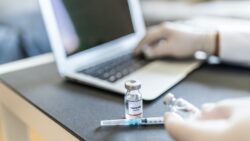Emerging COVID-19 variants have dominated international headlines in recent months. This highlights a reality that has been clear to physicians and researchers well versed in viruses, but not necessarily to the rest of us: SARS-CoV-2 has been mutating since the pandemic began.
While media reports sometimes use words like “mutation,” “strain” and “variants” interchangeably, there are differences.
“Mutations are changes that are basically typos that occur in the genome of the virus as it makes copies of itself and moves from person to person,” explained Pavitra Roychoudhury, a coronavirus genetics expert and instructor in the department of laboratory medicine and pathology at the University of Washington School of Medicine.
“Variants we define as a particular version of the virus that has a specific combination of mutations across its genome,” Roychoudhury continued. “A variant becomes a variant of concern when we start to see it rising in frequency over the population, over a period of time.”
The Centers for Disease Control and Prevention and the World Health Organization are now tracking three variants of concern (though the virus is evolving constantly and these are not the only ones): The variant first discovered in the U.K., the variant first discovered in South Africa, and the one found in Brazil.
Here’s a basic breakdown on what we know so far about how these variants compare with each other ― as well as with the original version of the coronavirus:
The original SARS-CoV-2
How long it has been circulating: In January 2020, the WHO announced a mysterious coronavirus-like pneumonia was circulating in Wuhan, China. About one month later, WHO gave an official name to both the virus (severe acute respiratory syndrome coronavirus 2, or SARS-CoV-2) and the disease it causes (COVID-19). Reports now suggest the virus was circulating well before officials confirmed the earliest cases — perhaps since October 2019.
Countries where there have been reported cases: To date, there have been 110 million reported cases of COVID-19. Only a handful of countries around the world have no reported cases, though some of those claims have been questioned.
What we know about it: Most of the information researchers have about COVID-19 to date is based on the original virus.
Vaccine effectiveness: The Pfizer shot is 95% effective against symptomatic disease. The Moderna shot is 94.5% effective.
Among the vaccines not currently available in the United States, the Novavax vaccine is 89.3% effective against symptomatic disease, Johnson & Johnson’s is 66% effective at preventing symptomatic disease and 85% at preventing severe disease, and Oxford/AstraZeneca is 70% effective against symptomatic disease.
B.1.1.7 (aka the U.K. variant)
How long it has been circulating: This variant was first identified in the U.K. during the fall.
Countries where there have been reported cases: B.1.1.7 has been identified in more than 80 countries to date. The United States had its first case on Dec. 30, and it has been detected in 42 states. Experts have predicted it will be the dominant strain in the U.S. by March.
What we know about it: This strain spreads more easily than other variants, which likely contributed to the surge in cases in the U.K. earlier this winter despite stay-at-home orders. “We know B.1.1.7 is more transmissible,” Roychoudhury said.
At first, health officials believed that B.1.1.7 was no more likely to cause severe illness or death than the original SARS-CoV-2. Now, however, they are reassessing and believe it may be more lethal than the original strain — though at this point no large-scale epidemiological studies back that hypothesis. It may appear more deadly because more infections ultimately can lead to more hospitalizations and deaths.
“There is some emerging data on whether it causes more severe disease,” Roychoudhury said. “But consensus has not been broadly reached on that.”
Vaccine effectiveness: The Pfizer and Moderna vaccines both appear to protect well against B.1.1.7 (and both companies are working on boosters to address current and future mutations).
The Novavax, Johnson & Johnson and Oxford/AstraZeneca vaccines all appear to protect against B.1.1.7 pretty well.
B.1.351 (aka the South Africa variant)
How long it has been circulating: The B.1.351 variant was first identified in South Africa in October.
Countries where there have been reported cases: The strain has been identified in 24 countries to date, and was first detected in the United States in January. Ten states have reported cases.
What we know about it: This variant shares certain mutations with the strain found in the U.K., and it appears to be 50% more transmissible than earlier strains of the virus. However, there is no data at this point to suggest it is more likely to cause severe illness or death.
Experts are paying particularly close attention to B.1.351, because clinical trials suggest the vaccines that are currently available or in development may not be as effective at protecting against it as they are against other strains.
There is also some preliminary evidence that certain treatments may not work as well. “The monoclonal antibodies that we use as treatment may be less effective against this,” said Edgar Sanchez, an infectious disease expert at Orlando Health.
Vaccine effectiveness: Early data suggests the Pfizer and the Moderna vaccines may be less effective against B.1.351, but both still offer good protection. And a small but promising clinical trial found that Pfizer’s vaccine can effectively neutralize the variant.
The Novavax shot appears to be around 60% effective against the variant. The Johnson & Johnson vaccine is 57% effective, based on current data. There is not enough data yet on the Oxford/AstraZeneca vaccine to say. While discouraging, these levels of protection are still better than nothing.

P.1 (aka the Brazil variant)
How long it has been circulating: The P.1 variant was first reported in Japan in four travelers from Brazil and it is believed it may have begun circulating in Brazil around October.
Countries where there have been reported cases: The U.S., Japan, Brazil and a handful of other countries. The U.S. has had reported cases in two states: Minnesota and Oklahoma.
What we know about it: Of the three variants of concern, researchers probably know the least about this one.
Emerging evidence suggests that some of its mutations may impact how transmissible it is, and that those mutations may also affect the antibodies produced from an earlier COVID-19 infection. In other words, it’s unclear whether immunity against the original virus protects people from this variant ― which raises concerns about the possibility of COVID-19 reinfection.
Vaccine effectiveness: At this point, there isn’t much information on how the vaccines stack up against P.1.
What does all of this mean for me?
Even though variants are dominating the headlines, the news doesn’t mean much in the everyday struggle to control the pandemic.
“On a day to day basis, as a physician seeing patients, I don’t really care what variant they have,” said Sanchez. “It doesn’t really change much, especially because we don’t sequence the virus for every patient.”
Experts advise people to get whatever COVID-19 vaccine they can, whenever it’s available to them, rather than holding out for one they believe might be more effective against certain variants.
In a recent town hall, President Joe Biden said vaccines will be available to all Americans by the end of July.
In the meantime, experts emphasized that the same preventive strategies against COVID-19 work against all the variants: wearing a mask (you should probably double up!), maintaining social distance and washing your hands.
“It’s terrifying when you hear there’s a variant, that’s totally understandable. … But I think we should bring people back to the reminder that the only way to prevent variants from arising is by reducing the number of cases overall, and reducing transmission and reducing the opportunities that you’re giving this virus to accumulate these mutations,” Roychoudhury said.
And because some new variants appear to be more contagious, they are likely to fuel more new cases — which will ultimately lead to more hospitalizations and deaths.
“For the public, the big lesson is: It’s not over. We’re not done yet,” said Sanchez. “But we’re getting there.”
Experts are still learning about COVID-19. The information in this story is what was known or available as of publication, but guidance can change as scientists discover more about the virus. Please check the Centers for Disease Control and Prevention for the most updated recommendations.


